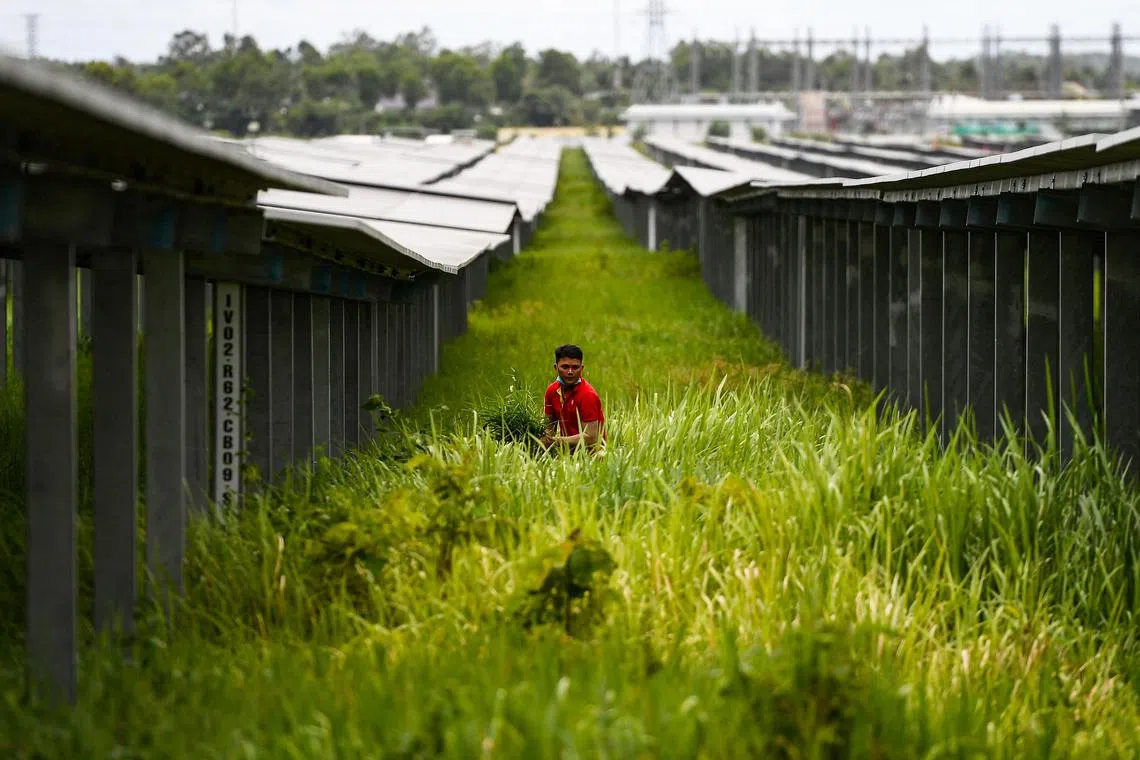Solar power helps 7 Asian nations avoid over $47 billion in fossil fuel costs: Report
Sign up now: Get ST's newsletters delivered to your inbox

Solar power has boomed in Vietnam, allowing the country to avoid US$1.7 billion in additional fossil fuel costs.
PHOTO: AFP
Follow topic:
SHARM EL SHEIKH, Egypt - Solar power generation helped seven countries in Asia avoid potential fossil fuel costs of around US$34 billion (S$47.6 billion) in the first half of 2022, a new report has found.
Published on Thursday by environmental think-tank Ember, the Centre for Research on Energy and Clean Air, and the Institute for Energy Economics and Financial Analysis, the report has shown that solar power is helping seven Asian nations meet their electricity demand amid soaring fossil fuel prices.
The seven countries are China, India, Japan, South Korea, Vietnam, the Philippines and Thailand. The fossil fuel savings are equivalent to 9 per cent of total fossil fuel costs in these countries between January and June.
China has the greatest solar capacity in the world, with Japan, India, South Korea and Vietnam also being among the global top 10 states in terms of solar power generation.
In 2020, China had only 1 gigawatt (GW) of solar power, but it had ramped up capacity to 307GW by the end of 2021. This year, it is expected to add between 75GW and 90GW of new solar energy to its electricity grid.
Expanding its solar capacity has allowed China to meet 5 per cent of its total electricity demand within the first half of 2022, with US$21 billion avoided in additional coal and gas imports.
Vietnam, on the other hand, had close to zero terawatt hours of solar generation in 2018, but it has reached the point where solar power accounted for 11 per cent of electricity demand – equivalent to 14 terawatts – from January to June. This has allowed the country to avoid US$1.7 billion in additional fossil fuel costs.
Although Vietnam rapidly expanded its solar capacity, the energy grid was not ready for a sudden increase in solar power, causing the solar output to fall by 30 per cent to 40 per cent in some areas, the report noted.
Though this has since improved, investment into new solar capacity has dropped dramatically, largely due to grid instability and continued delays to the country’s eighth power development plan.
International companies and industries have been driving solar investments in the development of microgrids, for example, to feed their demand for clean energy sources.
Ember’s Asia electricity analyst Achmed Shahram Edianto said Vietnam needs to reconfigure the whole power system around clean energy into its policy, and expanding solar power should go beyond alleviating power shortages.
“Its upcoming power development plan should be to rebuild the country’s power systems around clean energy, rather than one that merely incorporates a few more transmission lines, to alleviate the network bottlenecks,” he added.
The report said that while growth in solar has been slower in Thailand and the Philippines, the avoided fuel costs have still been notable.
“While solar accounted for only 2 per cent of Thailand’s electricity in the first six months of 2022, an estimated US$209 million of potential fossil fuel costs were avoided,” it said.
“The Philippines avoided US$78 million in fossil fuel spending, despite solar accounting for only 1 per cent of (electricity) generation.”
The Philippines now has favourable policies towards solar energy, according to its recently revised energy plan, the report noted, adding that two of its largest players in solar now have substantial solar capacity that has been permitted or is under construction.
But access to financing for solar projects still proves challenging.
Thailand led Asean in solar investments in 2016 but has failed to keep pace with the rest of the region, with just under 600 megawatts of additional solar power since then, according to the report.
Therefore, while it may have the solar capacity, a more concerted decarbonisation effort is required, it added.
Dr Edianto said one of the most significant barriers that the Philippines is facing in ramping up solar capacity was the notion that coal remains the cheapest energy source.
“But current international market prices could show how vulnerable the countries that rely on import commodities such as gas and coal really are,” he noted.
The report concluded that if these countries could meet their 2030 solar capacity targets, at least US$44 billion in fuel costs could be avoided.
The region’s solar capacity is expected to acquire an average annual growth rate of 22 per cent a year till 2030 across China, India, Indonesia, Japan and the Philippines.
This story was published with the support of Climate Tracker’s COP27 Climate Justice Fellowship.


